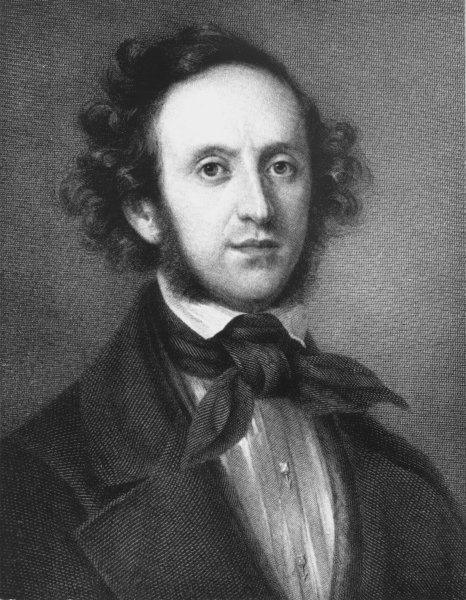Felix Mendelssohn-Bartholdy (1809-1847)
Born February 3, 1809 in Hamburg.
Died November 4, 1847 in Leipzig.
Symphony No. 4, Op.90 in A Major “Italian”
Composed: 1831-March 13, 1833. Revised 1834-1837.
First Performance: May 13, 1833 in London with the composer conducting in the Philharmonic Society.
Instrumentation: 2 flutes, 2 oboes, 2 clarinets, 2 bassoons, 2 horns, 2 trumpets, timpani and strings.
Unlike many romantic composers, the young prodigy Mendelssohn – the grandson of a famous philosopher and son of a successful banker – led a happy life. His family’s substantial financial resources afforded him good teachers such as Carl Zelter in Berlin who introduced him to Goethe. At the age of 20 he directed a performance of Bach’s St. Matthew Passion which led to a resurgence of interest in Bach’s vocal music and earned the young Mendelssohn international fame.
He was able to spend much time traveling. In the spring of 1829 Mendelssohn made his first trip of ten to England. He was inspired by his travels which included a walking tour of Scotland to produce the Hebrides Overture (Fingal’s Cave) (1830) and his Scottish Symphony (No. 3 in A minor) (1830,1842).
In February 1831 he wrote to his sister Fanny that he was making great progress on the symphony. Unusually, he was having trouble with some compositional details. It was only when he received a commission from the Philharmonic society of London that he completed the work in Berlin in 1833 and conducted the first performance shortly after. He was still not satisfied with the work – the finale in particular – and refused its publication. He reworked it to its present form beginning the following year but remained unpublished during his lifetime. Like that other musical prodigy Mozart, Mendelssohn died suddenly from unknown causes at the early age of 38.
The first movement is an upbeat sonata allegro that begins with a surging theme played by the strings.
Example 1. First movement
The Andante second movement was inspired by a religious procession that Mendelssohn witnessed. Berlioz was in Italy at the same time as Mendelssohn. Berlioz’s “Italian Symphony” Harold in Italy, contains a slow movement that sprang from the same inspiration.
Example 2. Second Movement
A minuet trio/scherzo. Horns and bassoons.
Example 3. Third Movement
The finale is based on the Italian leaping folk dance the Saltarello. Berlioz also used this dance brilliantly in his Roman Carneval Overture. Unlike Berlioz who set his Saltarello in A major, Mendelssohn’s version is in A minor.
Example 4. Finale
Resources
[amazon template=iframe image&asin=3795765285][amazon template=iframe image&asin=B0000027AL][amazon template=iframe image&asin=B00005MOA7][amazon template=iframe image&asin=B0000028WU]




